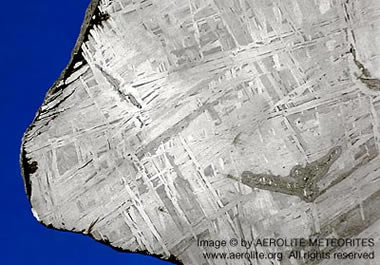My topic for discussion this week will attempt to answer the question:
Why do astronomers believe that the debris that creates many isolated meteors comes from asteroids, whereas the debris that creates meteor showers is related to comets?
But first, I want to share two things that serendipitously fell from my Twitter feed (@mossjon) today. Today’s APOD (Astronomy Picture of the Day @apod) featured the unusual mountain on Ceres (Comins, 2015, p. 239).
What created this unusual mountain? Ahuna Mons is the largest mountain on the largest known asteroid in our Solar System, Ceres, which orbits our Sun in the main asteroid belt between Mars and Jupiter. Ahuna Mons, though, is like nothing that humanity has ever seen before. For one thing, its slopes are garnished not with old craters but young vertical streaks. One hypothesis holds that Ahuna Mons is an ice volcano that formed shortly after a large impact on the opposite side of the dwarf planet loosened up the terrain through focused seismic waves. The bright streaks may be high in reflective salt, and therefore similar to other recently surfaced material such as visible in Ceres’ famous bright spots. The featured double-height digital image was constructed from surface maps taken of Ceres last year by the robotic Dawn mission. (“APOD: 2017 October 9 – Unusual Mountain Ahuna Mons on Asteroid Ceres,” 2017)
The second thing that immediately caught my eye today was an episode of Astronomy Magazine‘s “The Real Reality Show” entitled “How an Asteroid Killed Off the Dinosaurs” covered late in Chapter 8 of our textbook (Comins, 2015, p. 263-4) and which also bonked me on the head via my Twitter feed:
Find out more about the asteroid that killed off the dinosaurs with @deicherstar in The Real Reality Show.https://t.co/oM7IdOBwFW
— Astronomy Magazine (@AstronomyMag) October 9, 2017
[youtube https://www.youtube.com/watch?v=_6WAu0mtZRk?rel=0]
(“Real Reality Show: How an Asteroid Killed Off the Dinosaurs | Astronomy.com,” 2015)
But enough from our sponsors. On with the real show and convincing Chicken Little that the sky is indeed not falling.
As comets dissipate, they leave behind debris in their orbits. When the Earth plows through such remnants, many meteors appear to emanate from the same place within a very short time-span producing a meteor shower. Most meteor showers are named for the constellation they appear to radiate from. For example, later this month, on October 21st, the Orionids should be visible (weather permitting).

Orionids: The Orionid meteor shower produces meteors from Halley’s comet, which orbits the sun every 75 to 76 years. The Orionid shower happens every October and can last for a week, treating patient observers to a show of 50 to 70 shooting stars per hour at its peak. [Orionid Meteor Shower Sparks Bright Fireballs (Video)] (“Meteor Showers and Shooting Stars: Formation,” 2017)
A few years ago, on a cold December night, I drove down to Powell Observatory to join many fellow ASKC club members to watch a meteor shower. Wrapped up in coats, thermal underwear and sleeping bags, laying back on my zero-gravity lounge chair (the best position from which to watch a meteor shower), and despite the cold conditions, the meteor shower provided spectacular viewing. It was like watching a fireworks show in slow motion, one burst at a time, some of which streaked across the sky nearly from horizon to horizon.
Outside of meteor showers, however, many meteorites are ejected from other planets, moons, asteroids and, yes, comets, through collisions. By studying the chemical composition and age of meteorites, geologists classify three types: Stony meteorites, which are similar to ordinary rock, but can be covered by a dark fusion crust; Iron meteorites will often contain iridium, which is not common on Earth, since most if not all of our iridium descended with the iron to the molten core and will show a unique structure when cut and polished, called Widmanstätten pattern; and, Stony-iron meteorites composed of roughly half iron and half rock.

Many meteorites were once pieces of asteroids. Iron meteorites are fragments of asteroid cores, because just like on Earth, the iron sank to the center of the asteroid and stony-iron asteroids hail from the boundary between an asteroid’s iron core and its stony crust. Stony meteorites, however, have a variety of origins, including the stony crusts of asteroids, and account for the lion’s share (94%) of meteorites that fall to Earth. So if Chicken Little gets bonked on the head, it’s most likely a stony meteorite, easily mistaken for a terrestrial rock, instead of the less common iron (5%) and stony-iron (1%) meteorites. The odds are favorable for Chicken Little avoiding cranial injury, despite the daily downpour of 300 tons on average of infalling space debris. (Comins, 2015, p. 259-62)
***
References
APOD: 2017 October 9 – Unusual Mountain Ahuna Mons on Asteroid Ceres. (2017, October 9). Retrieved from https://apod.nasa.gov/apod/ap171009.html
Byrd, D. (2017, October 16). Look for Orionid meteors this month | Astronomy Essentials | EarthSky. Retrieved from http://earthsky.org/?p=27937
Comins, N. F. (2015). Chapter 8 Vagabonds of the Solar System. In Discovering the essential universe (6th ed., pp. 233-266). New York, NY: W.H. Freeman and Company.
Meteor Showers and Shooting Stars: Formation. (2017, June 9). Retrieved from https://www.space.com/15353-meteor-showers-facts-shooting-stars-skywatching-sdcmp.html
Notkin, G. (n.d.). Types of Meteorites: Iron, Stone, Stony-Iron, Lunar, Martian. Retrieved from http://geology.com/meteorites/meteorite-types-and-classification.shtml
The Real Reality Show: How an Asteroid Killed Off the Dinosaurs | Astronomy.com. (2015, November 9). Retrieved from http://www.astronomy.com/videos/the-real-reality-show/2015/11/how-an-asteroid-killed-off-the-dinosaurs
